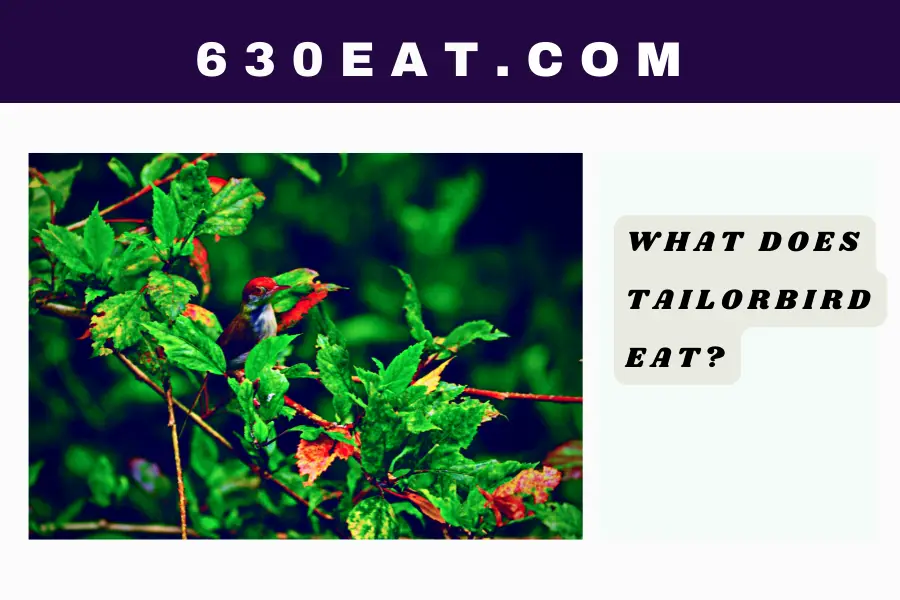Whether you’ve grown up seeing them in your backyard or are just beginning to appreciate their beauty, blue jays are one of nature’s most wonderful feathered friends. Seeing them swoop and soar through the sky is a treat, but do you ever wonder what they eat?
The answer may surprise you! While we might think they like to snack on the same kinds of food that we do, blue jays actually prefer a variety of different things. From nuts and seeds to bugs, berries and even other animals, there’s a lot to explore when it comes to this dynamic bird’s diet.
In this article, we’ll take a look at what blue jays like to eat both in the wild and at bird feeders. We’ll also discuss their dietary needs as baby birds and what types of food they avoid. Plus, we’ll get into details about the size and life span of blue jays too. Read on for more about this magnificent avian species.
What Do Blue Jays Eat in the Wild?
In the wild, blue jays mostly feed on wild seeds and berries from woodland shrubs and trees. They also eat insects such as caterpillars, beetles, grasshoppers, spiders and snails. Acorns are an especially important part of their diet. Like other members of the corvid family, jays have an incredible ability to remember where they stored acorns.
They’re also known to eat small frogs and mollusks like snails. In addition to insects, they will feed on nuts, weed seeds, grain, fruits and other berries. Blue jays are also attracted to feeders stocked with peanuts, sunflower seeds and safflower seeds. They may even be seen eating bread or meat scraps.
Foods Blue Jays Prefer to Eat and Drinks They Prefer
Blue Jays are omnivores, meaning they’ll eat a mixture of both plant- and animal-based foods. They prefer to eat acorns, nuts, seeds, arthropods like beetles or caterpillars, soft fruits like cherries or blueberries, small birds’ eggs, and occasionally small vertebrates like frogs and mice.
At feeders, they may visit feeders with nectar or suet – although they don’t seem as interested in these as other birds. They’ll also occasionally drink nectar from flowers. In the summer you can often find them at bird baths.
When it comes to food preferences – while they’ll happily eat just about anything – blue jays seem to prefer sweet foods and nuts more than other types of food, so if you’re looking to attract them to your backyard bird feeder it’s best to offer these types of snacks.
What Size of Food Do Blue Jays Eat?
Blue Jays are medium-sized birds, ranging in size from 9 to 12 inches. Their diet is varied, and they are omnivores, meaning they eat both plants and animals. In the wild, Blue Jays consume acorns, nuts, weed seeds, grain, fruits and berries. They also eat bread and other human foods; meat (including bird eggs); and small animals such as frogs, earthworms and insects.
At feeders, Blue Jays prefer sunflower seeds but will also eat suet or peanuts. They often carry away food from a feeding station to be hidden and eaten later. You can offer them a variety of types of food that fit their large bill – what size of food do blue jays eat? Cracked corn or popcorn is a great choice for Blue Jays (and other backyard birds).
What Do Baby Blue Jays Eat?
When it comes to what baby blue jays eat, the answer is quite varied. They are omnivorous, meaning they consume both plant and meat sources. Their diet consists of both fruits, berries, nuts, and even small scraps. Baby blue jays also enjoy eating insects when they are available as a source of protein.
In addition to these natural food sources, baby blue jays have been known to also feed from bird feeders filled with seeds and nuts. They might even show up at your door looking for pet food or other human snacks.
Below is a list of common food items that baby blue jays enjoy consuming:
- Seeds (such as sunflower seeds, millet & cracked corn)
- Nuts (like peanuts & almonds)
- Insects (like caterpillars and beetles)
- Fruits & Berries (grapes, blackberries, apples & oranges)
- Pet Food
- Small Scraps (bread crusts & bits of cheese)
What Seeds Do Blue Jays Eat?
Blue Jays love sunflower seeds and peanuts, both in and out of their shells. They are also known to eat corn, wheat and oats. In the wild, Blue Jays will forage for insects like grasshoppers and caterpillars, too!
Blue Jays can pack up to 100 sunflower seeds in their gullet at once. They will also store extra food they find in crevices of trees or other hiding places they can access later on. They will even cache food in the ground and take it a few days later when food is scarce.
Other Foods and Creatures That Blue Jays Will Eat
Blue Jays are opportunistic eaters and can be quite adventurous with their diet. They will not turn away from food items such as frogs, mollusks, eggs, and insects. In fact, according to the Cornell Lab of Ornithology, blue jays are one of the few bird species that actively seek out insects. Blue Jays will also feed on dead animals when food is scarce.
It is important to note that while blue jays do enjoy a variety of foods, they have preferences for certain items such as nuts, fruits, seeds, and bird eggs. In particular, blue jays are known to enjoy acorns and suet. Blue jays can also find plenty of sustenance when foraging in the wild or at a backyard bird feeder. It is recommended that homeowners offer suet for blue jays in colder months since it is an excellent source of protein and healthy fats.
What is a common name for a blue jay?
The common name for a blue jay is Cyanocitta cristata, which belongs to the family Corvidae. It is also known as the French name Geai bleu. Blue Jays are large, colorful birds with an unmistakable crest on their heads – typically blue, white and black in color. As they are found throughout North America, they are familiar sights in gardens and backyards.
Blue Jays are known for their intelligence and resourcefulness – they’re able to use tools to find food, remember when and where a food source can be found and retain knowledge about food availability from season to season. As omnivores, this means that Blue Jays can eat almost anything that crosses their path – from wild fruits and vegetables to grains, nuts insects and other small animals.
FAQs
A lot of questions arise when it comes to feeding blue jays. Let’s answer some of the most frequent questions about these birds.
Do Blue Jays eat Acorns?
Yes, blue jays love acorns, and they can actually help spread oak trees because they are notorious for burying acorns in the soil.
How Long Do Blue Jays Live?
The average lifespan of a blue jay is 7-8 years, though they have been known to live as long as 15 years in captivity.
Do Blue Jays Eat Chipmunks?
While it may seem unlikely that these small birds would take down a chipmunk, yes, blue jays do hunt the occasional chipmunk in the wild.
Do Blue Jays Eat Other Birds?
Blue jays are known to eat other small birds, such as sparrows and warblers, either singly or in groups.
What Food do Blue Jays Not Eat?
Blue Jays are extremely adaptable and can mostly survive on whatever food is available to them that season. However, they generally stay away from spicy foods like chili peppers and other pungent herbs.
Conclusion
Blue Jays, with their striking colors and unique foraging habits, are among the most beloved North American backyard birds. They enjoy munching on nuts, seeds, fruits, and other soft items, often at our bird feeders. They love peanuts, particularly when in their shells. Blue Jays are also a great benefit to nature, as they help spread acorns, which help produce oak trees in forests.
Blue Jays are adaptable creatures, but they do have preferences when it comes to food. Next time you’re watching your Blue Jays at the feeder, think of the wide range of food they eat, from seeds to fruits to insects and more. Whether they’re eating at the backyard bird feeder or snatching up peanuts in the wild, it’s plain to see these birds are quite the impressive foragers.



